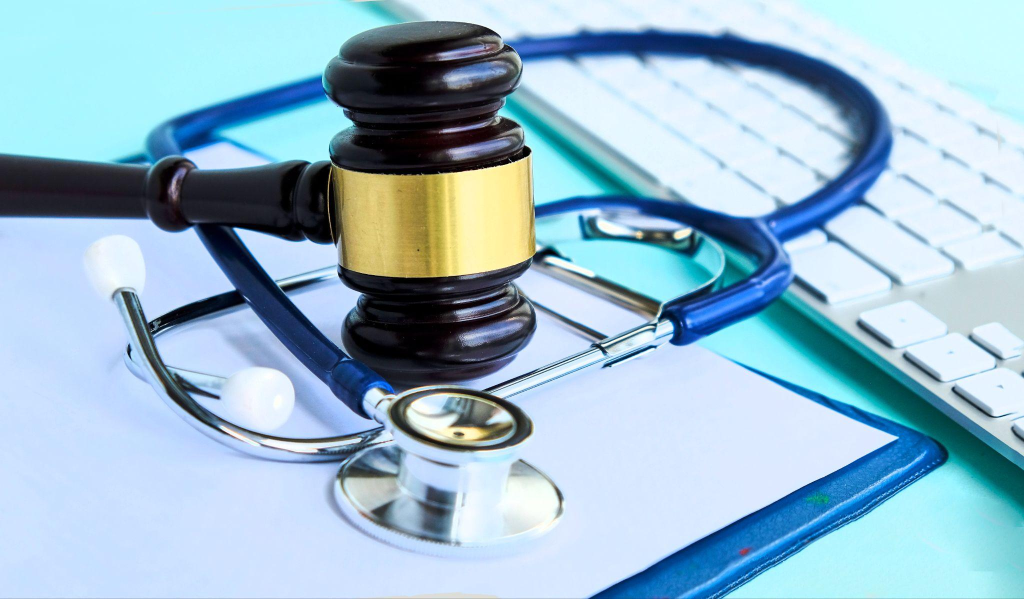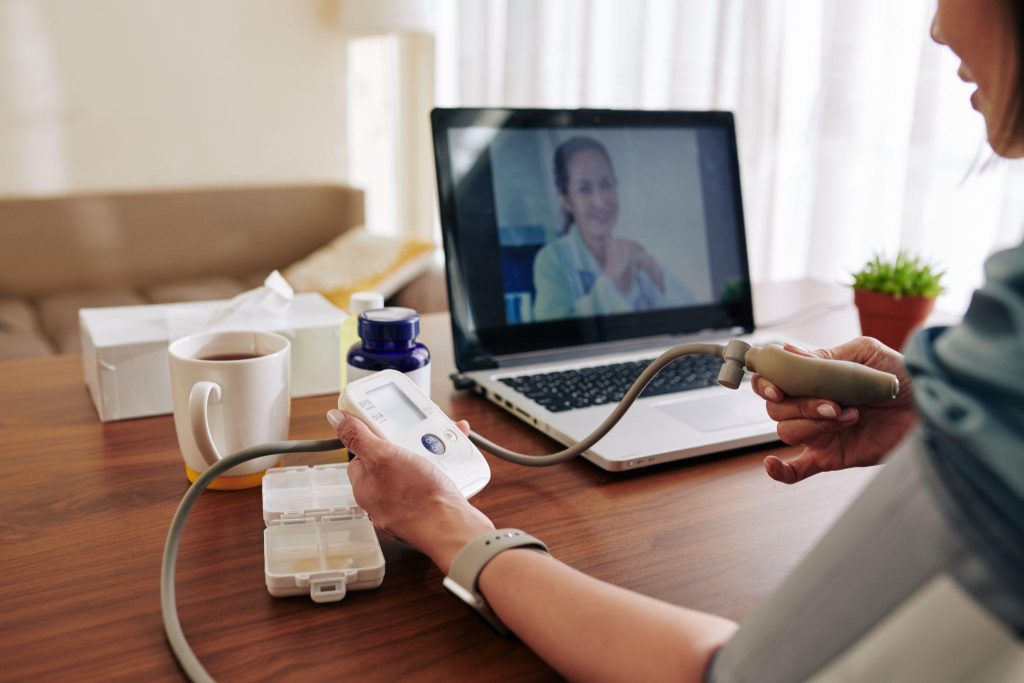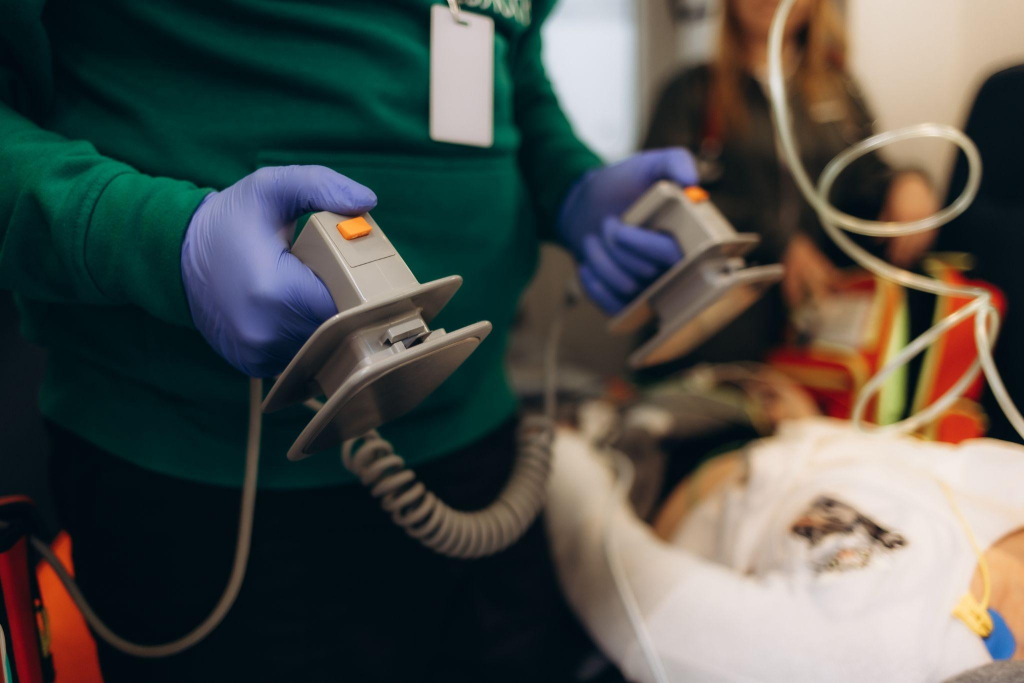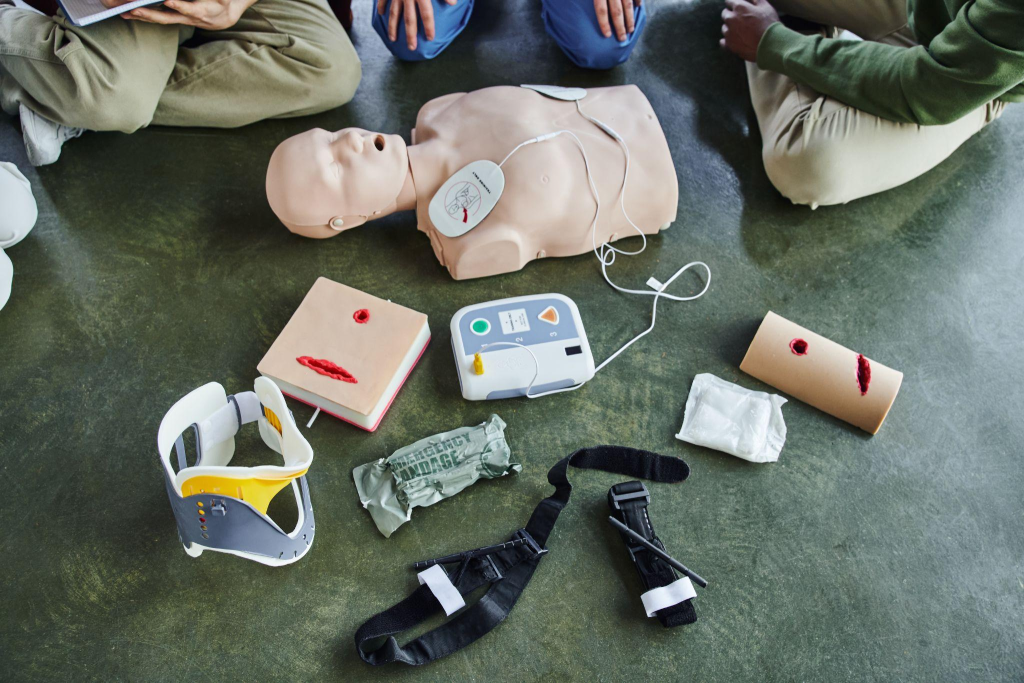As a healthcare professional, staying up-to-date with the latest guidelines and best practices is crucial for delivering high-quality patient care. However, navigating the complex legal landscape surrounding medical certifications, such as Advanced Cardiovascular Life Support (ACLS), can be challenging.
Understanding the legal considerations for ACLS providers is essential to ensure compliance, minimize liability risks, and maintain a valid certification. By familiarizing yourself with these aspects, you can confidently provide life-saving interventions while adhering to the highest standards of care.
In this article, we will delve into the key legal considerations for ACLS providers, offering insights on how to stay compliant and protect yourself and your patients.
What are Legal Considerations for ACLS Providers?
Legal considerations for ACLS providers encompass a wide range of responsibilities and compliance requirements to ensure adherence to legal standards and protect against liability, including steps for evaluating legal compliance.
Scope of Practice
ACLS providers must operate within the boundaries of their professional scope of practice, which is defined by state laws and medical board regulations. It is crucial to be familiar with the specific procedures and interventions you are authorized to perform under your certification and licensure.
Informed Consent
Obtaining informed consent is a legal requirement for any medical procedure, including those performed in emergency settings. While emergencies may complicate the traditional informed consent process, providers should still attempt to communicate effectively with patients or their representatives whenever possible.
Documentation
Accurate and timely documentation of patient interactions, treatments, and outcomes is crucial for legal protection and continuity of care. Providers can also benefit from guidance on staying legally compliant to ensure their documentation practices meet legal standards. Medical records serve as legal documents, and any discrepancies or omissions can have legal implications. Proper documentation of your ACLS certification and related training is also essential, as it serves as evidence of your qualifications and helps mitigate legal risks in case of scrutiny.
Liability Coverage
Ensuring that your certification is up-to-date is crucial for maintaining legal coverage and protecting yourself against potential liability claims. Additionally, implementing strategies for maintaining legal compliance can help mitigate risks and enhance professional security.
Certification Requirements
ACLS providers must maintain current certification through recognized organizations. Engaging in an ACLS certification course, such as the one offered by Affordable ACLS, helps you stay updated with current guidelines and ensures compliance with industry standards. Regularly reviewing compliance guidelines and planning for recertification are essential to maintain your qualification and legal standing.
Understanding these legal considerations empowers ACLS providers to navigate potential legal challenges and deliver high-quality care with confidence. By staying informed, maintaining proper documentation, and adhering to certification requirements, you can minimize legal risks and focus on providing life-saving interventions to your patients.
How to Navigate Legal Considerations for ACLS Compliance
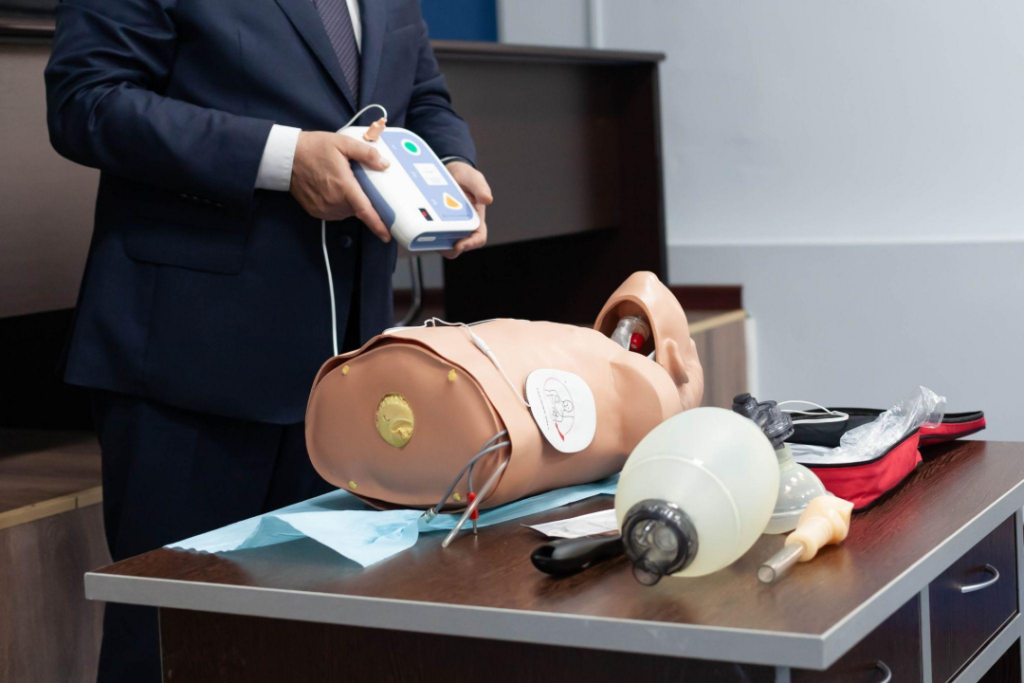
Navigating the legal landscape of ACLS compliance requires a thorough understanding of certification requirements, liability risks, and adherence to compliance guidelines. Each of these components plays a critical role in ensuring that healthcare professionals can perform their duties effectively while minimizing potential legal challenges. By systematically addressing these areas, providers can maintain the integrity of their practice and the safety of their patients.
Certification and Credentialing Essentials
Grasping the essentials of ACLS certification and credentialing is vital for legal adherence, as it requires understanding legal and regulatory compliance to ensure alignment with industry standards. State-specific mandates and medical board criteria often dictate the necessary qualifications for healthcare practitioners. This involves not only completing recognized courses but also ensuring these align with the professional responsibilities and roles specific to your practice area.
- Recognized Education: Engage in programs that are approved by authoritative bodies to meet certification standards.
- Role-Specific Requirements: Ensure that your training and certification align with the specific responsibilities and expectations of your healthcare role.
Documentation and Record-Keeping
Comprehensive record-keeping is a cornerstone of demonstrating compliance and provides a defense against legal scrutiny. Detailed documentation reflects a commitment to maintaining high standards and offers a clear trail of accountability.
- Comprehensive Tracking: Keep detailed logs of all ACLS-related activities, including course completions and continuing education efforts.
- Protective Measures: Use documentation as a defense mechanism against claims of non-compliance or negligence.
Liability and Risk Management
Effectively managing liability and risk is integral to maintaining ACLS compliance. Certification sets a benchmark for care that must be adhered to, reducing the risk of legal repercussions.
- Insurance Verification: Ensure your certification is acknowledged by your malpractice insurance, securing coverage in emergencies.
- Protocol Adherence: Strictly follow clinical guidelines to mitigate liability exposure and enhance patient safety.
Staying Current with Compliance Standards
The realm of medical practice is ever-evolving, with frequent updates to guidelines and best practices. Staying informed about these changes is essential for maintaining compliance and delivering superior care, as it highlights the importance of legal compliance in business.
- Routine Updates: Regularly update your knowledge of current ACLS standards to keep your practice aligned with the latest insights.
- Proactive Adaptation: Embrace new guidelines promptly, integrating them into your routine to avoid reliance on outdated practices.
Successfully navigating the legal considerations for ACLS compliance is an ongoing endeavor requiring vigilance, awareness, and a dedication to continuous improvement. By concentrating on certification essentials, maintaining detailed records, managing liability effectively, and staying updated with compliance standards, healthcare providers can uphold the highest standards of patient care while minimizing legal risks.
Step 1: Understand Certification and Credentialing Requirements
Establishing a strong foundation in certification and credentialing is vital for healthcare professionals involved in Advanced Cardiovascular Life Support (ACLS). These elements not only validate a provider’s expertise but also ensure readiness to manage critical cardiac situations. ACLS certification serves as a crucial endorsement of a practitioner’s capability to deliver effective emergency care.
Navigating Certification Standards
A comprehensive understanding of the certification landscape begins with exploring the criteria set by leading healthcare authorities. These standards guarantee that certifications mirror the highest levels of proficiency expected within the medical community.
- Authorized Programs: Opt for courses that have received approval from reputable oversight organizations, confirming that the education delivered aligns with industry norms.
- Comprehensive Syllabus: Ensure the program encompasses all critical aspects of ACLS, such as the latest resuscitation techniques, medication administration, and collaborative team roles.
Credentialing for Professional Practice
Credentialing acts as a rigorous verification process, essential for securing employment within healthcare systems. It involves a meticulous assessment of an individual’s educational achievements, certification validity, and practical experience.
- Validation Procedures: Prepare for extensive scrutiny where your ACLS credentials and professional background undergo detailed evaluation.
- Employer-Specific Criteria: Gain clarity on the distinct credentialing requisites of your prospective workplace, which may include additional certifications or skill assessments.
Adopting a proactive stance towards certification and credentialing is crucial for aligning with the dynamic standards of medical practice. Engaging with a reputable ACLS certification provider ensures that your credentials remain current, thereby facilitating a legally compliant and successful career in healthcare.
Step 2: Maintain Proper Documentation
Robust documentation practices form the cornerstone of legal compliance for healthcare professionals certified in Advanced Cardiovascular Life Support (ACLS). By ensuring meticulous records of your training and certification, you not only affirm your professional expertise but also fortify your defense against potential legal challenges. Documenting your educational journey and skill acquisition underscores your dedication to maintaining high standards of care.
Detailed Record Management
Effective record management involves systematically tracking all components of your ACLS training and certification lifecycle. This precise documentation guarantees that your qualifications are readily verifiable when necessary.
- Certification Records: Clearly document the certifying organization, alongside the dates of your certification and any subsequent renewals, ensuring all relevant information is current.
- Skill Acquisition Logs: Maintain detailed entries of acquired skills and competencies from each training session, emphasizing the practical application of ACLS protocols.
Strategic Legal Documentation
Strategic documentation serves as a proactive measure to safeguard against claims of non-compliance or negligence. By maintaining comprehensive records, you substantiate your adherence to guidelines and reinforce your commitment to continuous professional development.
- Regulatory Compliance: Ensure your documentation aligns with the standards set by regulatory bodies, preparing you for any reviews or assessments.
- Dispute Resolution: Detailed records act as evidence of your professional diligence, providing clarity in the face of legal disputes.
Integration with Digital Systems
Incorporating your documentation into digital platforms enhances its accessibility and compliance with organizational requirements. This integration not only streamlines your record-keeping process but also ensures alignment with broader healthcare systems.
- Digital Documentation Tools: Leverage electronic systems to efficiently store and manage your ACLS documentation, facilitating easy access and retrieval.
- Collaborative Documentation Platforms: Utilize platforms that support documentation sharing among healthcare teams, promoting consistency and transparency.
By adopting comprehensive documentation practices and leveraging technology, healthcare professionals can ensure their records are thorough, accessible, and aligned with both legal and organizational standards, thereby reinforcing their professional standing.
Step 3: Recognize Liability and Legal Protections
Appreciating the complexities of liability and legal safeguards is crucial for ACLS providers engaged in critical emergency interventions. This understanding not only protects the provider but also ensures that patient care is delivered within the parameters of legal and ethical standards. Given the inherent risks in emergency medicine, a comprehensive grasp of liability provisions and legal frameworks is essential.
Navigating Liability Coverage
A core aspect of professional security for healthcare providers is understanding the scope of their liability coverage. It is critical to ensure that your malpractice insurance encompasses all facets of your ACLS responsibilities, thus providing protection during unforeseen patient care incidents.
- Insurance Compatibility: Verify that your liability coverage aligns with the full range of your ACLS duties, including any specific interventions you might administer.
- Ongoing Evaluation: Regularly assess your insurance policy to ensure it accurately reflects updates in your certification or practice scope, maintaining alignment with your professional activities.
Legal Frameworks and Compliance
Conforming to legal frameworks is fundamental for compliant medical practice. Recognizing these legal constructs allows providers to deliver care confidently, minimizing exposure to legal challenges.
- Regulatory Acumen: Stay informed about current legal requirements and standards relevant to ACLS providers, which may differ by region.
- Preventative Strategies: Employ strategies to minimize legal risks, such as strict adherence to established care protocols and maintaining comprehensive records of all patient interactions and treatments provided.
Protections Through Protocol
Adhering to established protocols not only enhances patient safety but also acts as a shield against legal liability. Consistently applying ACLS guidelines ensures that care delivery aligns with recognized standards, thereby decreasing the likelihood of legal disputes.
- Guideline Adherence: Diligently follow ACLS guidelines in all applicable scenarios, demonstrating a commitment to best practices and mitigating potential liability.
- Continual Learning: Engage in ongoing education to stay abreast of protocol updates and advancements in emergency care practices, bolstering your legal protections.
By recognizing the importance of liability coverage and legal protections, ACLS providers can navigate the complexities of emergency medical care with enhanced assurance. This understanding not only improves the quality of care delivered but also strengthens the provider’s legal standing within the healthcare environment.
Step 4: Stay Updated with Compliance Guidelines
Keeping informed about the latest compliance guidelines is essential for maintaining clinical excellence and legal compliance. These guidelines evolve to reflect advancements in medical research and innovations, ensuring that healthcare providers deliver the most effective care. For ACLS professionals, regularly updating their knowledge base is crucial to prevent outdated practices and to uphold the highest standards of patient care.
Prioritize Lifelong Learning
A commitment to lifelong learning ensures that healthcare providers remain knowledgeable about the latest compliance standards. Engaging in continuous educational activities enhances professional growth and keeps practitioners informed.
- Professional Conferences: Attending industry conferences provides an opportunity to learn about new developments and engage with thought leaders in the field.
- Accredited Training Programs: Enroll in certified programs that focus on the latest ACLS protocols and standards, ensuring a comprehensive understanding of current practices.
Exploit Digital Innovations
Digital tools offer a convenient way to access the latest information on compliance guidelines. By integrating these resources into daily routines, healthcare professionals can stay informed and adapt to changes seamlessly.
- Healthcare Portals: Access online portals that compile updates from authoritative bodies and provide a centralized source of information.
- E-Learning Platforms: Utilize platforms offering courses and modules on the latest guidelines, providing flexibility and accessibility for busy professionals.
Cultivate a Compliance-Centric Environment
Fostering an environment that prioritizes adherence to guidelines is vital for enhancing practice standards. Encouraging open discussions and continuous improvement supports a culture of compliance.
- Team Workshops: Organize workshops within your team to discuss and implement new guidelines, promoting a shared responsibility for compliance.
- Performance Reviews: Conduct regular reviews that focus on adherence to guidelines, offering feedback and support for continuous improvement.
By integrating these approaches, ACLS providers can ensure they remain at the forefront of medical practice, delivering care that is both legally compliant and clinically effective. Prioritizing education, leveraging technology, and fostering a compliance-oriented culture are key strategies in maintaining high standards in healthcare delivery.
Step 5: Plan for Recertification
Strategically planning for ACLS recertification is essential for maintaining your professional qualifications and adherence to current medical standards. This process not only revitalizes your skills but ensures your knowledge stays aligned with the latest advancements in ACLS protocols. As guidelines evolve, staying informed reflects your dedication to providing exemplary patient care.
Understanding Recertification Protocols
Navigating the recertification landscape involves comprehending the specific timelines and educational prerequisites mandated by certifying organizations. Awareness of these protocols is crucial to prevent any disruptions in your professional practice.
- Renewal Timeline: Generally, ACLS certification requires renewal biennially. Proactively tracking this schedule prevents certification lapses that could impede your practice capabilities.
- Educational Updates: Participate in comprehensive courses that emphasize both theoretical and practical aspects, ensuring alignment with the latest ACLS standards.
Preparing for a Smooth Recertification Process
Effective preparation is fundamental to achieving seamless recertification. By organizing your time and resources, you can fulfill recertification requirements without hindering your professional duties.
- Course Flexibility: Opt for programs offering adaptable learning structures, integrating with your work commitments while thoroughly covering necessary content.
- Resource Integration: Utilize digital tools and materials that provide interactive learning experiences, enhancing your grasp of current ACLS protocols.
Sustaining Continuous Professional Development
Embracing a proactive approach to recertification cultivates a lifelong learning mindset, crucial for adapting to evolving medical practices. This mindset supports professional growth and underscores your commitment to patient safety and care excellence.
- Ongoing Education: Regularly refresh your knowledge with the latest research and case studies in ACLS to maintain competency and relevance.
- Career Advancement: View recertification as a pathway to professional enhancement, exploring cutting-edge techniques and innovations in emergency cardiovascular care.
By effectively planning for recertification, ACLS providers can ensure their credentials remain valid, uphold their legal and professional responsibilities, and continue to deliver high-quality care to patients in critical situations.By understanding the legal considerations surrounding ACLS certification and compliance, you can confidently navigate the complexities of emergency medical care while upholding the highest standards of patient safety. Staying informed, maintaining detailed documentation, and regularly updating your knowledge are key strategies to ensure your practice remains legally compliant and clinically effective. Purchase your certification or recertification course today and let us support you in delivering the highest quality of care to your patients.

